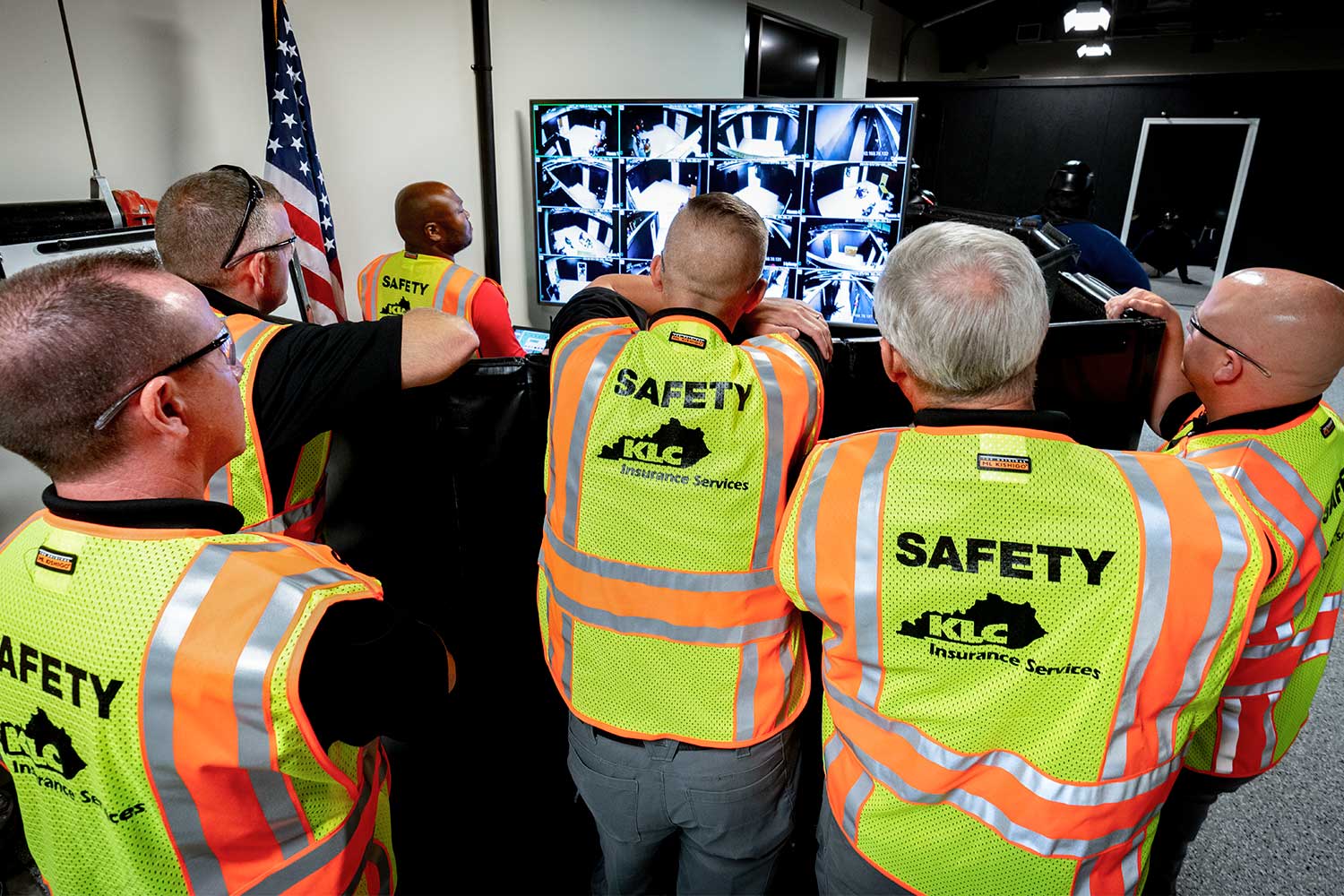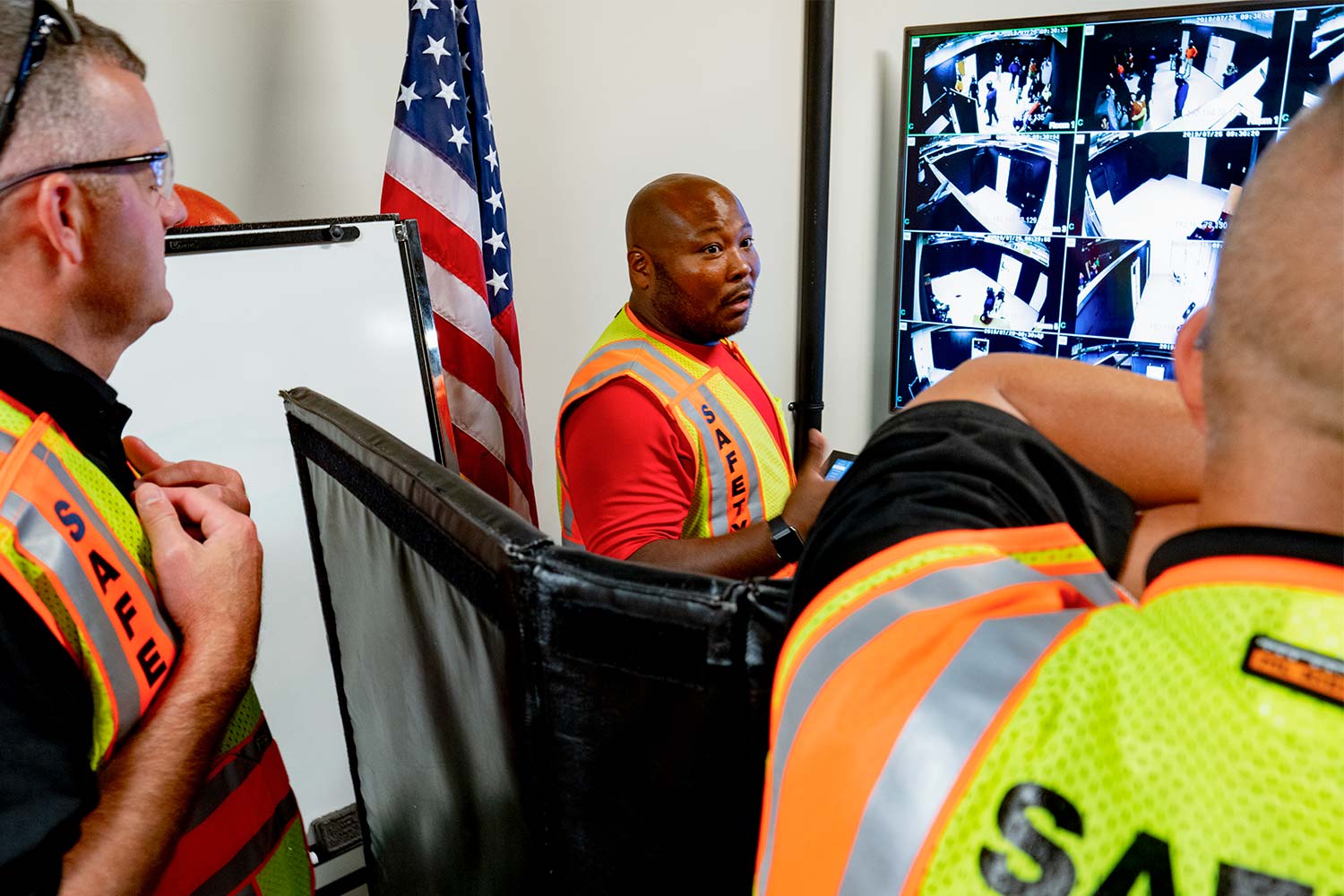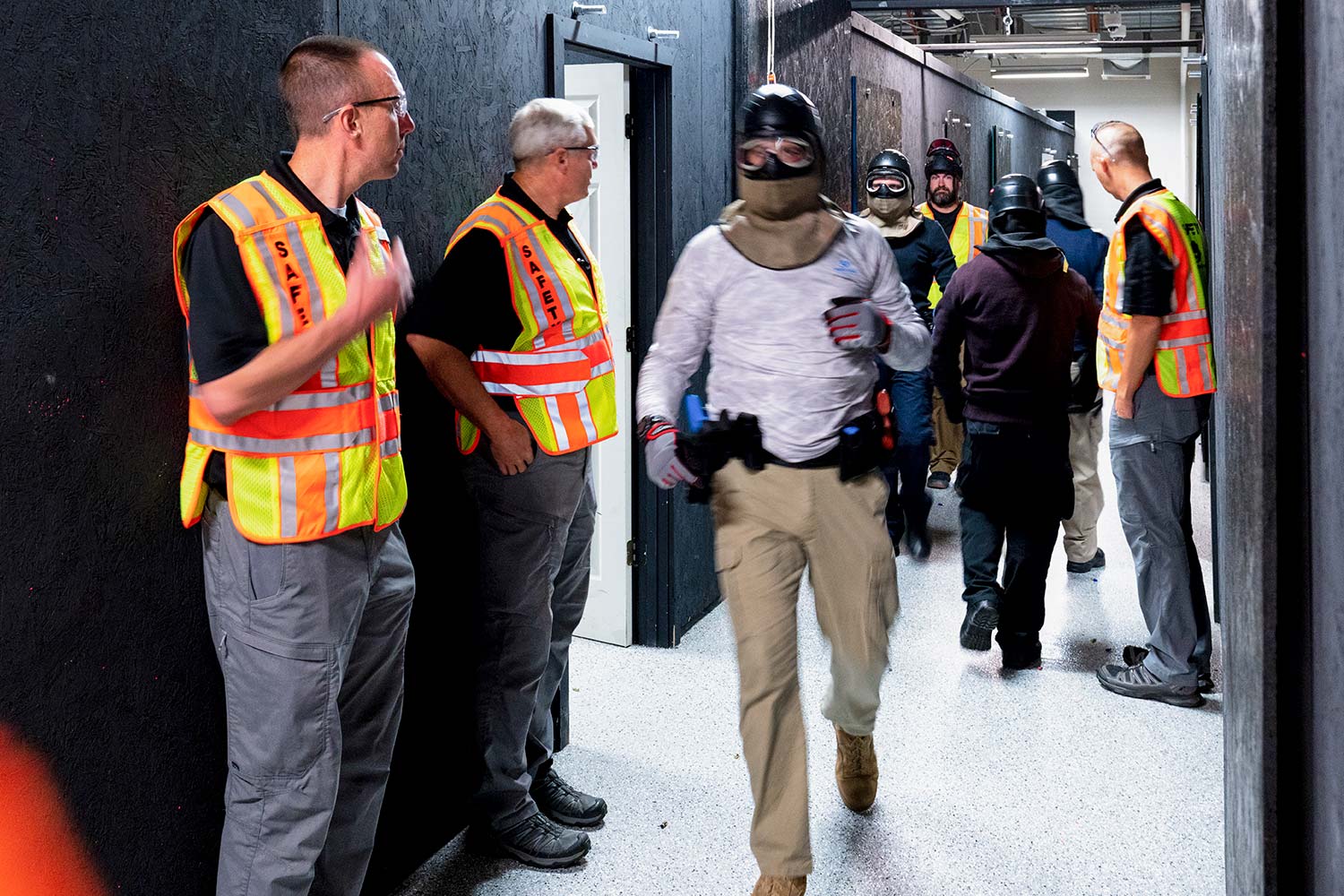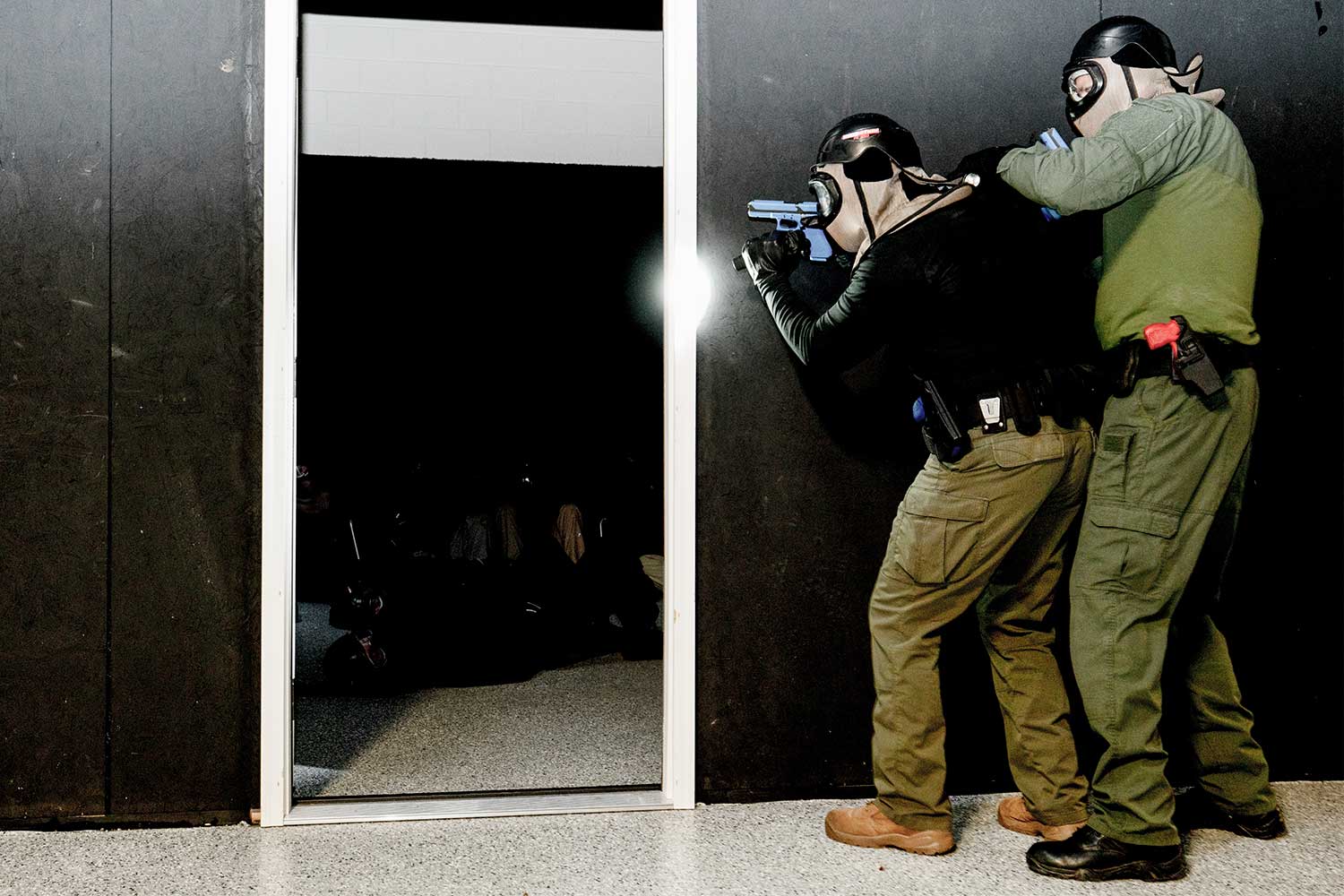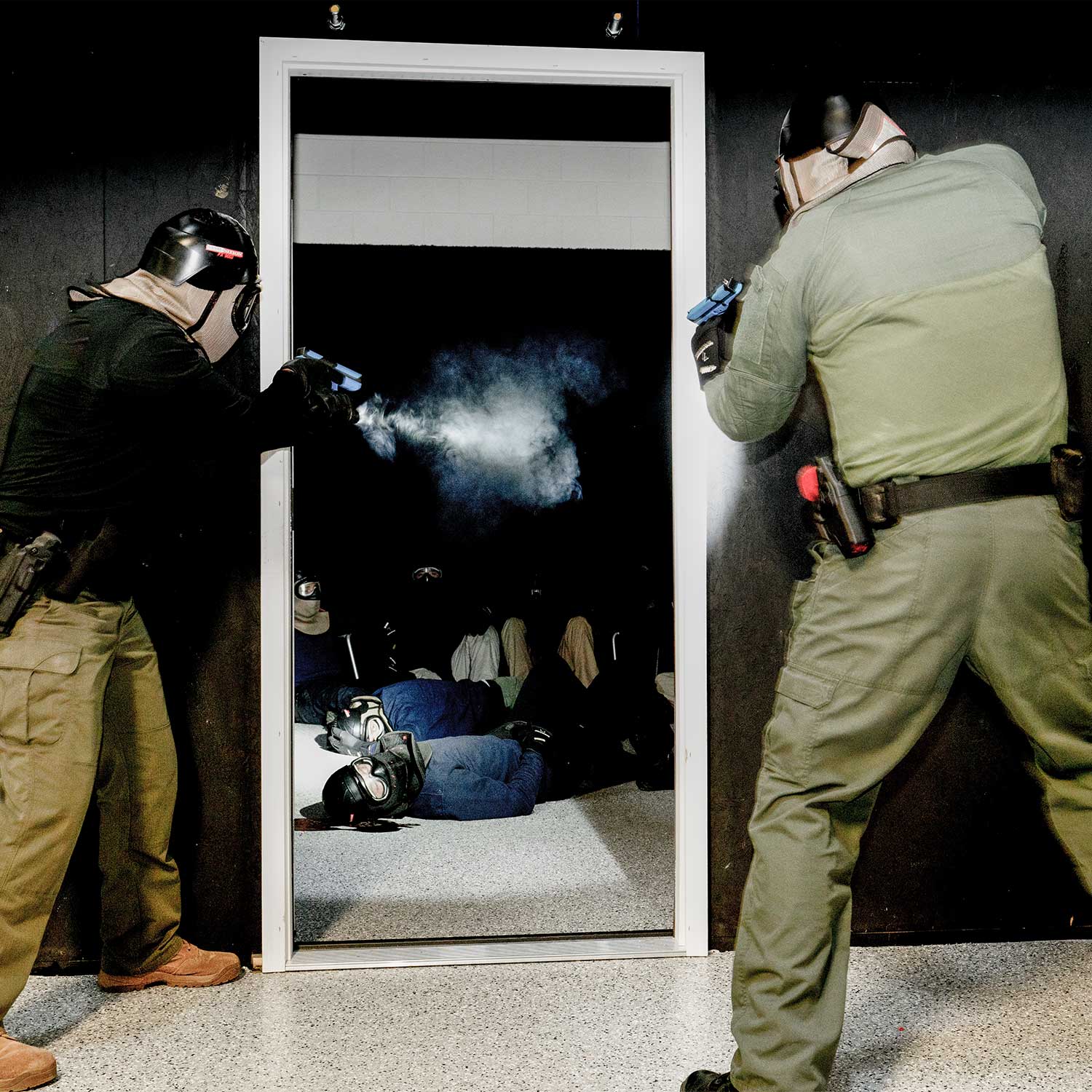KSP, DOCJT Work Together to Improve Training, OIS Response
The Kentucky State Police Critical Incident Response Team (KSP CIRT) joined forces Thursday with the Department of Criminal Justice Training (DOCJT) Patrol Tactics Section to study stress responses that occur in critical incidents.
The cooperative training initiative, hosted in DOCJT’s new shoot house, was an informal needs assessment, DOCJT Patrol Tactics Section Supervisor Shannon West said. The CIRT members observed DOCJT Law Enforcement Basic Training Academy recruits performing a series of active-shooter training drills.
In the shoot house, recruits can become immersed in a reactionary training environment that is as close to real-life scenarios as possible. This immersive training allows students to walk through spaces outfitted with desks to simulate searching for an active shooter in a classroom. Recruits must clear doorways, dark corners and closets, check behind furniture and sweep hallways throughout the shoot house’s 11 segmented areas. An assailant with non-lethal training ammunition could be around any corner, and officers must learn how to engage the suspect and eliminate the threat.
While CIRT team members monitored the training to better understand physiological responses to stress they often see from officers in the field, DOCJT staff capitalized on issues CIRT members have encountered in officer-involved shooting investigations to identify areas where training can be improved.
“They interview officers when they have been in these deadly-force situations,” West said. “They see a lot of stress response in the officers involved in shootings from auditory exclusion and tunnel vision to time slowing down or speeding up. They have to convey these things to grand juries that have been trained by Hollywood. They have to come up with ways to say, ‘What you seeing on TV isn’t real. This is the reality of high stress when a human being’s life is in danger.’”
The CIRT unit was created in 2017 and designed to add experience, expertise and transparency to officer-involved shooting (OIS) investigations in the commonwealth. The team investigates shootings for any Kentucky agency that requests their assistance. As troopers, KSP Lt. Claude Little said the investigators are familiar with KSP training because they experienced it. However, coordinating with DOCJT allows them insight into how other law enforcement officers in the state are trained.
“What was really good for us today is the importance of perception,” Little said. “We do that already in investigations, but we got to listen to the instructors debrief the recruits as they went through. Observing helps us to understand the importance of our investigative role and the interview process. We are getting to see, in a stressful, controlled environment, how officers are reacting. That helps us to do our interviews and investigations later when we’re finding out what happened (on the scene), and that helps us articulate what happened.”
DOCJT Commissioner Alex Payne applauded the cooperative work between the two agencies to better serve officers and troopers throughout the state. Practicing drills in response to active shooter calls in the shoot house provides recruits an opportunity to make mistakes and learn from them in a safe environment, he said.
“An officer-involved shooting is one of the most stressful times in any police officer’s life, period,” Payne said. “Here, they are able to see and confirm a lot of things because, no matter what you tell them in a classroom setting, this is where the rubber meets the road. There is no more critical an area for improvement than in the part where bullets may or may not fly.” Payne said.


